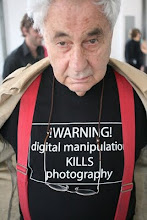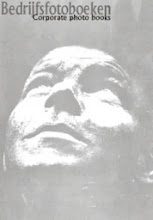
The photographic aspects of the cultural movement known as Neorealismo had a striking impact on Italian photography from the early 1940s. Part of a short-lived if highly influential reaction against fascism and the pictorial values that it had promoted, it also drew inspiration from the literary and cinematic ideas emerging in the chaos of post-war Italy. The films of Rossellini, Visconti, and Fellini are marked by this moment, as is the literature of Italo Calvino. The affinities between photography and cinema, as well as with painting, were particularly strong in this respect. It is clear that the film-makers in particular drew heavily on the visual approach and subject matter of the photographers.
Alberto Lattuada, a young cinematographer, wrote a short book in 1941 about the need to see photography as a documentary medium that could grasp reality in an instantaneous form and implied both a judgement and a selection of the facts. His work on a penal colony in Sardinia, made in 1941, conforms to these aspirations. Lattuada's work was a plea for a photography that sought to escape from fascist propaganda and ideology, to focus on presenting the reality of Italy's situation to the public. This manifesto for a new photography, informed by left-wing ideas and close in spirit to French humanism, was particularly urgent in the reconstruction period when the social and political issues that confronted Italy—land reform, industrialization, the problem of the mezzogiorno, were acute.
 In 1948 the Venice Biennale was devoted to the Fronte nuovo della arti, which inspired many photographers. Because Neorealismo could be seen to cross the arts, to be a form of inspiration to create a new Italy from the wreckage of history, it was less of a movement than a Zeitgeist—the spirit of the times, as the writer Calvino acknowledged. In photography, Neorealismo's main output was in the form of reportage on various social and political problems, and in particular on exploring the deprived parts of Italy that the Italian press tended to ignore. Neorealismo devoted considerable attention to rural poverty and to the archaic way of life of the peasants of Italy's more remote regions. Significant among them are Valentino Petrelli's (b. 1922) work on the small village of Africo, in Calabria, Mario De Biasi's (b. 1923) in the bassi (working-class areas) of Naples, Fulvio Roiter's (b. 1926) in the mines of Sicily and the mountains of Umbria, Franco Pinna's on rural communities in Sardinia. Their work appeared in certain important magazines of the time, Ferrania, Realismo, and Il caffe, where it was often presented as an indictment of social ills.
In 1948 the Venice Biennale was devoted to the Fronte nuovo della arti, which inspired many photographers. Because Neorealismo could be seen to cross the arts, to be a form of inspiration to create a new Italy from the wreckage of history, it was less of a movement than a Zeitgeist—the spirit of the times, as the writer Calvino acknowledged. In photography, Neorealismo's main output was in the form of reportage on various social and political problems, and in particular on exploring the deprived parts of Italy that the Italian press tended to ignore. Neorealismo devoted considerable attention to rural poverty and to the archaic way of life of the peasants of Italy's more remote regions. Significant among them are Valentino Petrelli's (b. 1922) work on the small village of Africo, in Calabria, Mario De Biasi's (b. 1923) in the bassi (working-class areas) of Naples, Fulvio Roiter's (b. 1926) in the mines of Sicily and the mountains of Umbria, Franco Pinna's on rural communities in Sardinia. Their work appeared in certain important magazines of the time, Ferrania, Realismo, and Il caffe, where it was often presented as an indictment of social ills.The use of stark black-and-white photography to present social and political facts is a key visual feature of Neorealismo, and it evolved into a formalism that marks much of Italian photography in the 1950s and 1960s, particularly present in the work of Mario Giacomelli. At the same time, some of the paparazzo photography of Italy's dolce vita in the 1950s has clear affinities with Neorealismo, especially in the sense that it seeks to unmask celebrities and present them as ordinary people.
Peter Hamilton Bibliography Zanner, I., Neorealismo e fotografia (1987)
Nederlands fotomuseum NeoRealismo
De 'nieuwe werkelijkheid' in de italiaanse fotografie 15 december 2007 t/m 9 maart
 Ruim 200 foto's van grote namen uit de Italiaanse fotografie, als Federico Patellani, Pietro Donzetti, Mario Giacomelli, Mario de Biasi en Franco Pinna, zijn nu voor het eerst samengebracht in de grote internationale tentoonstelling NeoRealismo. De nieuwe fotografie in Italië 1932-1960.
Ruim 200 foto's van grote namen uit de Italiaanse fotografie, als Federico Patellani, Pietro Donzetti, Mario Giacomelli, Mario de Biasi en Franco Pinna, zijn nu voor het eerst samengebracht in de grote internationale tentoonstelling NeoRealismo. De nieuwe fotografie in Italië 1932-1960.Het Neorealisme in Italië ontstond als reactie op het fascisme, eerst nog met name in de film maar de na de Tweede Wereldoorlog ontwikkelde zich ook een fotografische stroming. Het leverde prachtige, licht heroïserende en vaak ook dramatische foto's op van het gewone leven en bracht de werkelijkheid in het door armoede geteisterde naoorlogse Italië in beeld. De tentoonstelling laat de wisselwerking tussen fotografie, film en literatuur zien en bestaat uit groten-deels vintage afdrukken, filmfragmenten, affiches, tijdschriften en boeken.
Het `neorealisme' ontwikkelde zich in Italië vooral als reactie op de fotografische en filmische stijlen van het fascisme, waarin een ver van de realiteit verwijderde esthetiek dominant was.
 Het `neorealisme' staat voornamelijk als filmische stroming te boek, maar er heeft zich na WOII ook een belangrijke fotografische pendant ontwikkeld met fotografen als Federico Patellani, Pietro Donzetti, Mario Giacomelli, Mario de Biasi en Franco Pinna. Kenmerkend voor hun documentaire werk -steevast in zwart-wit- is de licht heroïserende aandacht voor de gewone man of vrouw en voor het alledaagse leven, waarbij ook de armoede in beeld kwam die het naoorlogse Italië lange tijd teisterde. Het gebruik van de 'methode' van het neorealisme (filmmakers lieten bijvoorbeeld gewone mensen zichzelf `spelen') leidde tot verhitte debatten over de scheidslijnen tussen engagement en journalistiek, tussen documentaire en kunst een discussieonderwerp dat ook in onze tijd regelmatig terugkeert.
Het `neorealisme' staat voornamelijk als filmische stroming te boek, maar er heeft zich na WOII ook een belangrijke fotografische pendant ontwikkeld met fotografen als Federico Patellani, Pietro Donzetti, Mario Giacomelli, Mario de Biasi en Franco Pinna. Kenmerkend voor hun documentaire werk -steevast in zwart-wit- is de licht heroïserende aandacht voor de gewone man of vrouw en voor het alledaagse leven, waarbij ook de armoede in beeld kwam die het naoorlogse Italië lange tijd teisterde. Het gebruik van de 'methode' van het neorealisme (filmmakers lieten bijvoorbeeld gewone mensen zichzelf `spelen') leidde tot verhitte debatten over de scheidslijnen tussen engagement en journalistiek, tussen documentaire en kunst een discussieonderwerp dat ook in onze tijd regelmatig terugkeert. Niet eerder was er zo'n uitgebreide tentoonstelling over deze invloedrijke `stroming' in de fotografie. Een groot deel van de 200 tentoongestelde foto's, in de meeste gevallen vintage afdrukken, is afkomstig uit de collectie Bertero, Milaan. Ook omvat de tentoonstelling filmfragmenten, affiches, tijdschriften en boeken. De tentoonstelling is samengesteld door Enrica Viganò en Giuseppe Pina en geproduceerd door AdmirA, Milaan.














Geen opmerkingen:
Een reactie posten